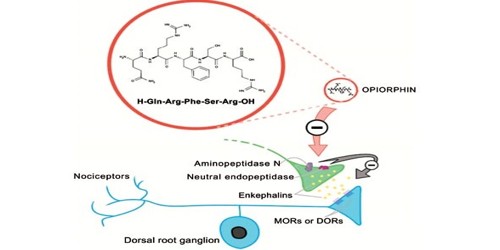Project on CARE Bangladesh
History of the Organization:
CARE Bangladesh is a part of CARE International, one of the world’s largest private international humanitarian organizations, enabling families in poor communities to improve their lives and overcome poverty.
CARE began work in Bangladesh in 1949 with the famous CARE packages that the Americans sent to survivors of World War II in Europe and Asia. The plain brown boxes holding food and other essential items were harbingers of hope. As a beginner, CARE started in Bangladesh with relief distribution. With time as the world changing, CARE changes it approaches as per need of the country. In 1974 CARE started Bangladesh’s largest Integrated Food for Work (IFFW) Project under the agreement with relief ministry of Bangladesh. In 1994 CARE again shifted it approaches from relief to development. Along with so many other projects, CARE started Integrated Food for Development (IFFD) Project under the agreement with MLGRD&C ministry later on followed by Integrated Food Security Program (IFSP) from 1999. CARE again shifted it programming approach towards Rights based Approach from 2002.
Today, CARE is partnering with communities, community based organizations, the Government and national NGOs to identify and confront root causes of the poverty. CARE’s programs focus on agriculture, education, health, water and sanitation, nutrition, infrastructure and small enterprise development, reaching around eight million people in 64 districts of Bangladesh.
In the fiscal year July 2005 to June 2006, CARE managed programs in all 64 districts of Bangladesh, the total value of the program was about US$ 28 Million directly reaching over 12 million poor and vulnerable people. 95% of its expended resources support program activities, and 5% go toward support services or administration.
Objectives of the Organization:
CARE started functioning with a relief operation and the first office opened in Dhaka in 1955. Prior to independence in 1971, CARE’s efforts were focused on relief, school and pre-school feeding, and construction of warehouse and low cost housing. Therefore, it was perceived as a relief organization. Since 1971 and with the signing of the basic operational agreement with the government of Bangladesh in 1974, CARE has focused on development projects.
Functions of the Organization: CARE is operationalizing all of its programs and development activities under the following program goal, program principles and geographical consideration of the area.
Program Goal:
In alliance with CARE and others, poor & vulnerable people, especially women, will have improved their social position & livelihood security, demonstrating the capacity to influence policies and practices that eradicate poverty and promote human dignity.
Program Principles:
In the past Long Range Strategic Plan (LRSP) of 2002 – 2006, the following Programming Principles were adopted mission wide:
- Promote empowerment
- Working with partners
- Ensuring accountability and promoting responsibility
- Addressing discrimination
- Promoting non-violent resolution of conflict
- Seeking sustainable results
- Promoting gender equity
To complete the above, the following Internal/Organizational Principles were added in the recent LRSP of 2007 – 2011.
- Living CARE’s core values (Respect, Integrity, Commitment to service, Excellence and Diversity)
- Adopting a learning culture
- Diminishing the power of hierarchy
- Recognizing and rewarding trust and openness
Program Focus Areas:
In the recent LRSP, following program focus areas are decided for the next five years to determine expected niche and comparative advantage within the larger development community in Bangladesh.
- Women’s empowerment
- Local governance (urban and rural)
- Disaster management (slow onset as well as rapid onset)
- Dissemination of successful models for addressing underlying causes of poverty
Geographic Focus Areas:
The following geographic focus is considered to determine 75% of new programs to be located.
- Haor and Char areas
- Jamuna & Tista River-belt areas
- Barind Tract
- Jamalpur, Sherpur, Netrakona, and Sunamgonj Districts
- Coastal belt
- Urban slums
- Disaster affected areas (slow-onset as well as rapid-onset)
Role of the Organization in the Eco. Dev. of Bangladesh:
From its beginning, CARE played a significant role in the socio-economic development of the country. During this long tenure of journey, CARE implemented lot of projects in different areas especially in rural areas of Bangladesh. Rural people of our country know CARE by name. They define as CARE is known to them that it has implemented many infrastructures and non-structure interventions in their village sand has supported or strengthened livelihood of many poor and vulnerable people especially destitute women of their villages. As an example, just in the last year from July 2004 to June 2005, the outputs of CARE’s work was so significant that it clearly reveals the strong role of CARE-Bangladesh in the socio-economic development. The outputs are as follows:
- More than 65 thousands men and women farmers were able to market their agricultural products more effectively.
- More than 52 thousands destitute women were able to earn a living wage by repairing and maintaining earthen roads in 4182 Union Parishads.
- Over 2 million people gained practical knowledge and skills in agriculture, small business management, literacy and numeracy, household health and hygiene.
- Nearly 212 thousand people were able to explain and diversify their economic activities through credit and business development services.
- More than 512 thousand people at risk to HIV/AIDS were able to obtain treatment for sexually transmitted diseases.
- More than 460 thousand urban and rural people obtained greater, more sustainable access to clean water, improved sanitation and hygiene education.
- Basic education improved in availability and quality for 74 thousand children.
In the entire period, CARE have constructed lot of infrastructures, thousands of kilometers earthen and paved roads, thousands of bridge-culverts, hundreds of rural markets, flood shelters, UP complexes, homestead improvement in flood affected areas etc. around all over the country which were a vital impact on socio-economic development.
Organogram of the Organization:
Currently around thousand staffs are working in CARE-Bangladesh. Most of them are based in project field offices outside of Dhaka. There are different staffing pattern in different field offices based on nature of the project. So, it is difficult to provide a common organogram of whole organization. However, a flow diagram of key positions of the central management may be given as follows:
Mission of the Organization
The new Mission set in the new LRSP describes how CARE-Bangladesh work in the future so as to attain the Vision. The Mission is:
“CARE Bangladesh amplifies the voices of the poor and the marginalized in ways that influence public opinion, development practice, and policy at all levels. This occurs as the knowledge drawn from our grass roots and global experience is channeled through purposeful relationships with civil society, government, and the private sector.”
The mission can be explained as, CARE will capitalize on programming experience and credibility with poor communities in new ways, so as to generate a powerful body of knowledge about poverty at grass roots level. This knowledge will then be channeled through new types of institutional relationships, with the expressed purpose of influencing public opinion, the practice of other development organizations, and the policies of government and business at all levels. CARE will no longer be satisfied with achieving impact only at the community level. Rather, it will use grass roots experience to leverage change at considerably greater scale, through advocacy and other forms of influencing.
Vision of the Organization
“We seek a world of hope, tolerance and social justice, where poverty has been overcome, and people live in dignity and security.
CARE International will be a global force and a partner of choice within a worldwide movement dedicated to ending poverty. We will be known everywhere for our unshakable commitment to the dignity of people.”
RESEARCH METHODOLOGY
Rational of the Study: The study was a part of my studying MBA (Distance) program, an assignment that was associated with the academic course. The assignment was given by the course instructor of “Strategic Management” Mr. Murad Hassan. As I was working in CARE-Bangladesh for more than 13 years, it was easy to me to exercise the assessment in my own organization, besides fulfilling the study requirements it would also help me to understand the management of our organization in my work context.
Objective of the Study: The objectives of this study are:
- To find out the strategic initiatives taken by the organization to promote sustainable and effective program delivery as well as to practice healthy working culture within the organization, and
- To find out the relevancy of the organizational management with the model given in the text book as standard practice.
Data Collection: The methods used for data collection was mainly to review the documents / reports / memos of CARE-Bangladesh, visit CARE website and interviewing organizational personnel.
(i) Secondary Source: As a secondary source CARE’s website is used for information collection where some important information about the organization is available.
(ii) Primary Source: As a primary source some professionals of CARE-Bangladesh were interviewed and reviewed thoroughly different reports and memos produced and published by the organization such as Long Range Strategic Plan (LRSP) document, Annual Report of CARE Bangladesh, different Guidelines and Manuals etc.
Tabulation of Data: Tabulation, analysis and interpretation of data is limited to analysis of strategic aspects undertaken by the organization for effective and sustainable program delivery and internal management. The strategic steps / initiatives are furnished one by one sequentially and at the end of analysis, the writer tried how to relate the strategic directions with the standard model.
Report Writing: For preparing the study report, the guideline provided by the course instructor was followed. English is selected as the language for report writing. Simple words and simplified sentences used in writing for easily understandable to all readers.
Limitations of the survey: Following are the limitations which the surveyor acknowledged during the survey:
- Survey was based on organizational own documents, scope of reviewing customer’s satisfaction was limited.
- The study requires a great effort and time to survey such a big organization. As a service professional, available time of the writer was limited beyond his official duties and responsibilities.
FINDINGS AND ANALYSIS
Organization Profile:
CARE Bangladesh is a part of CARE International, one of the world’s largest private international humanitarian organizations, enabling families in poor communities to improve their lives and overcome poverty.
CARE Bangladesh supports programs all over Bangladesh with a focus on the poorest areas and populations. CARE’s program consists of different projects focuses on education, health, water and sanitation, nutrition, infrastructure, small enterprise development, and agriculture and natural resources reaching around eight million of people. These projects are implemented in concert with the government; community based organizations and Non-government organizations.
Programming Approach:
- Household Livelihood Security
Application of a “livelihoods” approach enables the programs within each region to identify the inter-relationships between one another, and break down the artificial, sectoral boundaries between the different interventions. In this data-driven approach, monitoring and evaluation systems pay particular attention to program results at the household level, as well as to unintended impact and the dimension of changes happening over time.
- Rights Based Approaches
CARE’s work focuses deliberately and explicitly on people’s efforts to achieve the minimum conditions for living with dignity. CARE work for building internal capacity to empower people to claim and exercise their rights and fulfill their responsibilities.
- Advocacy
CARE-Bangladesh is working to develop competency and build the capacity of others in the deliberate process of influencing those who make policy decisions. Advocacy efforts focus on policy makers and policy implementers at levels above that of the household, with the aims of addressing the root causes of poverty and discrimination. - Partnership
CARE believe that true partnerships are based on a shared vision regarding the objectives and purpose of the work undertaken together, along with shared contributions of resources, shared risks and shared control of program and financial information. - Capacity Building
Capacity building – the process whereby a person’s, an organization’s or a society’s ability to achieve its purposes is enhanced – will go hand-in-hand with partnership in much of CARE’s work. Although CARE often plays the role of capacity-builder, it can also be the beneficiary of capacity building provided by partners and other organizations.
- Direct/Indirect Service Delivery
CARE Bangladesh will continue to implement direct delivery of services on a limited scale. This enables to stay rooted in field experience and avoid getting out of touch with the practical difficulties of bringing new project designs to fruition.
- Gender Equity
CARE works through advocacy, partnership and direct project implementation to increase awareness of gender inequities. Gender analysis is integrated with all phases of the project cycle, ensuring women’s participation in identifying and prioritizing problems, in project design and in project implementation.
Donors of CARE:
CARE is a development partner of the government of Bangladesh with the Ministry of Local Government, Health and Family Planning, Ministry of Agriculture, Ministry of Home, Disaster Management Bureau and has working relations with the Ministry of Food.
The major donors are the United States Agency for International Development (USAID), Canadian International Development Agency (CIDA), DANIDA, UK’s Department for International Development, UNICEF, UNDP, SAVE the Children (USA) and Family Health International and the European Union.
Overview and Outputs – 2005:
The following are some examples of the results of work from July 2004 through June 2005:
- More than 65 thousand men and women farmers were able to market their agricultural products more effectively, in larger quantities, and with greater profits.
- More than 52 thousand destitute women were able to earn a living wage by repairing and maintaining 655 thousand kilometers of earthen roads in 4,182 Union Parishads.
- Over 2 million people gained practical knowledge and skills – in agriculture, small business management, literacy and numeracy, household health and hygiene, and how to access their legal rights and entitlements – through scores of training and capacity-building initiatives.
- Nearly 212 thousand people were able to expand and diversify their economic activities through credit and business development services.
- More than 512 thousand people at-risk to HIV/AIDS were able to obtain treatment for sexually transmitted diseases, access to condoms, drug-use rehabilitation assistance, and accurate information on how to protect themselves and their partners against the virus.
- More than 460 thousand urban and rural people obtained greater, more sustainable access to clean water, improved sanitation, latrines, and hygiene education.
- Basic education improved in availability and quality for 74 thousand children, through activation of school management committees and mothers’ groups, more local government assistance to schools, more community and household interest in educating girls, and introduction of child-centered learning methodologies in the classroom.
Pattern of Strategic Management Practices:
CARE Bangladesh has introduced a number of strategic initiatives to ensure effective management practice. Some of key strategic initiatives are listed below:
- 1. Establishing Long Range Strategic Plan (LRSP) 2007-2011:
The New LRSP of CARE-Bangladesh focused on 5-Year Program Goal and Strategic Direction for managing the activities and culture of the organization.
5-Year Program Goal: This describes those specific areas where, if CARE succeed in carrying out the new Mission, will be able to achieve systemic impact, enabling CARE to reach the poor at much greater scale.
– Ending violence against women
– Ending seasonal hunger (monga)
– Fulfillment of land & water rights
– Increasing access to public services
– Expanding market access
– Promoting dignified employment.
Strategic Directions: These are the organizational, programming, and cultural “breakthroughs” that must be achieved in order to carry out the Mission and achieve the 5-Year Goal. Over the five-years of the new LRSP, they will gradually become an integral part of comparative advantage as an international NGO. The LRSP includes three Strategic Directions.
- Organizational Relevance: CARE operates under a new, more adaptable model that enables it to be more influential in addressing underlying causes of poverty in Bangladesh and the sub-region, more legitimate in the eyes of local civil society, more accountable to communities, and more flexible and competitive in a maturing NGO market.
- Economic Empowerment: The poor and the marginalized, especially women, participate in and benefit from private sector growth, through improved access to dignified employment, markets for their products, information and services for their economic activities, and technical assistance for their entrepreneurial initiatives.
- Learning Culture: CARE’s organizational culture promotes learning, knowledge sharing, and excellence in programming, enabling staff and partners to understand, demonstrate, and measure impact on the underlying causes of poverty and social exclusion.
2. Establishing Program Quality Unit (PQU):
One of the key strategies for moving ahead on this Strategic Directions is the establishment of a Program Quality Unit. The Unit consists of three core components, Evaluation & Impact, Monitoring & Learning and Information. The proposed program quality unit is intended to “support CARE Bangladesh to implement excellent programs through its strategic guidance to staff on linking a learning culture to improving organizational learning and relevance; frameworks and guidelines for improving program quality and poverty analysis as well as CARE’s ability to measure and demonstrate its impact; best practices in knowledge sharing (externally and internally) and knowledge management; and building a network of relationships that help achieve the organizational mission”.
3. Formation of Executive Management Team (EMT) and Field Office Management Team (FOMT):
At the central level an Executive Management Team is formed and operationalized consisting of Top level executives, mid-level managers and field level front liners. CARE Country Directors, Assistant Country Directors, General Managers from different departments, Program/Project Coordinators, other Sectoral officials and representatives from field offices representing the EMT. High level decisions regarding change or creation of any policies/regulations in the Personal Policy Manual, operational strategies and modalities of the program as well as organization etc. are discussed in the EMT meeting and decisions are taken in a participatory manner based on practical field experiences and concerns from field staffs.
Same as EMT at headquarter, field and regional offices has Field Office Management Team (FOMT) and Regional Office Management Team (ROMT) who are mainly handling the field / regional office issues and taking the crucial decisions at field / regional office level.
- 4. CARE Reward and Recognition Program:
The CARE Bangladesh Recognition and Reward (R&R) Program is designed to encourage employees to make a performance difference – either individually or through teams – by recognizing and rewarding individuals and teams for their outstanding performance. The main objectives of this program are to:
- Appreciate individuals and teams for valuable contribution in a timely manner.
- Encourage employees to take challenges beyond normal activities.
- Keep employees motivated for higher-level performance.
Every four months HR publishes the names of employees / teams who have shown a performance difference by making significant contribution to the program or organization. These staff members are awarded from the mission in recognition of their contribution based on the following areas:
- Innovation or Creativity that adds value to the organization/program.
- Good leadership and upholding the core values.
- Taking proactive action in reducing Gender and Diversity gaps and discrimination in the workplace.
- Taking prompt action / challenges to protect CARE’s resource and image.
- Developing systems/mechanism that increase effectiveness and efficiency in the management of resources.
- 5. Developing Guideline for Donor Relation & Communication Protocol
Objectives: CARE Bangladesh developed donor relation and communication guideline to attract donors for funding different projects of CARE Bangladesh. Major objectives of this guideline in short are described as follows:
(i) Expand and deepen mutual understanding between CARE Bangladesh and its key donors.
(ii) Improve quality of CARE’s operational interaction with donors, written and verbal communications & management of donor visits to project activities.
(ii) Develop capacity to identify and resolve early signs of potential disagreements and misunderstandings between CARE and donors.
General Principles: Some of general principles in short are fixed as follows:
(i) All CARE staff who are in direct communication with donors should be fully conversant with the CARE “brand”.
(ii) All CARE staff who are in contact with a particular donor, or who publicly represent a project funded by that donor, should be conversant with its major strategies.
(iii) Senior program staff need to be aware of the “fit” between CARE’s strategies and those of our major donors.
(iv) Interaction with donors should foster positive impressions about CARE’s entire program, without any sense of competition among different projects for funding and support.
Key Activities: Some of the key activities are decided as:
(i) Identify “official” CARE contact persons for each donor, and periodically provide them with refresher training on specific elements of the CARE “brand”.
(ii) Regularly obtain the donors’ most current strategy documents; ensure that the appropriate CARE staff have read them and identified the commonalities with CARE’s strategies.
(iii) Provide donors with briefing materials/packets on CARE’s work that are accurate, up-to-date, clear, and attractive.
(iv) Pay careful attention to donor “visibility” and “marking” requirements.
(v) Convene an annual CARE-Donor Round Table Meeting that brings together the senior staff of CARE and major donors.
(vi) Invite donors to CARE meetings concerned with review, coordination, and evaluation of the projects they fund.
(vii) Regularly review and update the CARE Bangladesh website with info of interest to donors.
Guidelines for Written & Verbal Communications: A guideline is set for donor communication. Some of them are as follows:
(i) Written or verbal communications should be addressed to persons at the level of approval or response required in regard the issues raised or the action requested.
(ii) Within one week of sending an important letter or e-mail to a donor, the person who signed it (or his/her designate) should follow-up by telephone or e-mail to confirm that the appropriate persons received and understood the content.
(iii) Graphics, tables, or supporting documentation should be included in communications to donors when it will help make the information easier to understand.
(iv) Formal letters should be proof-read by someone who was not involved in writing them, to check for clarity of ideas, smoothness of flow, appropriate vocabulary, spelling or grammatical errors, potential for creating a confused or wrong impression.
- 6. Competitive Bid Quiz:
Improving CARE’s success rate at winning new projects in line with exciting new LRSP is a high priority for CARE Bangladesh. For managing and to enrich very important competitive bids process, CARE Bangladesh organized a competitive bids quiz competition.
Analysis the Effectiveness of Management:
In our lecture module, a model is presented for strategic management process. The model describes that the cycle of events goes as follows:
- Top management determines the corporate philosophy, purpose, mission, objectives and strategy for the organization as a whole as well as guidelines for each of the strategic business units.
- Each business unit or SBU then does its own strategic planning.
- If the organization has a planning department, its function is to assist the SBUs in their strategic planning or to supply information that the SBU may need.
- Top management then reviews and approves the strategic plans of each SBU.
- Each SBU then moves to develop a strategic plan for each of its functional areas.
- After the development of strategic plans for each of the functional areas of the business or SBU unit, budgets are developed. As can be seen from this description, virtually all levels of management become involved in the strategic management process at some point.
Strategy Implementation, Control & Selection
CARE’s strategic management system is very much consistent to the model lustrated here. Organization purpose, mission, objectives and strategic directions are being developing at the central level by participating officials from different levels and different professions. At the Field Office, FOMT is responsible for implementing strategy at the field level. Central management provides necessary support to the field office management for strategic planning. And thus CARE management as a development organization, is effectively operating the CARE activities in Bangladesh since 1949. For instant, some specific examples of effectiveness of the management in a broader sense is listed below.
- The management effectively convinced different donors from different countries UK, USA, Canada, Switzerland, Denmard for funding of various projects.
- The management effectively signed agreement with Bangladesh Government for implementing different projects in Bangladesh and also ensured the Government contribution.
- From its beginning, CARE has created a number of good and skilled development workers, some of them those are not in CARE now are successfully working in good positions of other development organizations both in Bangladesh as well as outside the country.
CONCLUSIONS & SUGGESTIONS
Conclusions: From the overall assessment of CARE Bangladesh as a development organization, no doubt it is playing a vital role in socio-economic development of Bangladesh. Once upon a time CARE constructed thousands-thousands kilometer earthen roads in rural areas all over the country and CARE is known to almost all the villages of the country. People once knew CARE by the roads in their villages. But CARE is a flexible organization. Over the period of time, CARE changes its strategic directions both in case of program delivery and internal culture as a positive response to the demand of the changing world as well as of the country. Not only roads, in the long run CARE has implemented various interventions both software and hardware interventions in addressing agriculture, fisheries, health and hygiene, education, disaster response, social awareness and mobilization, advocacy, governance etc. Hardly any sector may be found where CARE Bangladesh did not work yet. So, donors, government and all stakeholders as well as community people have a very good impression on CARE’s activities.
Suggestions:
During designing future programs, CARE may continue the consideration of social aspect and social problems of the country.
Effort to uproot the poverty and underdevelopment should be continued.
Emphasis may be given to encourage experienced and skilled staff to stay with the organization.
CARE may work to improve the legal framework of the country.
Bibliography / References:
1. CARE Bangladesh Personal Policy Manual
2. Annual Report-2004, CARE Bangladesh
- CARE Bangladesh Website :www.carebd.com
- Various Memos such as Allbang 2296, Allbang 2303, Allbang 2309 and Allbang 2313
- Different Documents such as Donors Relations Communications Protocol, CARE Reward and Recognition Program etc.
- New Long Range Strategic Direction document
















